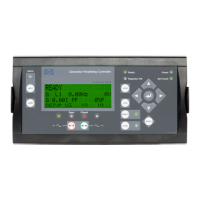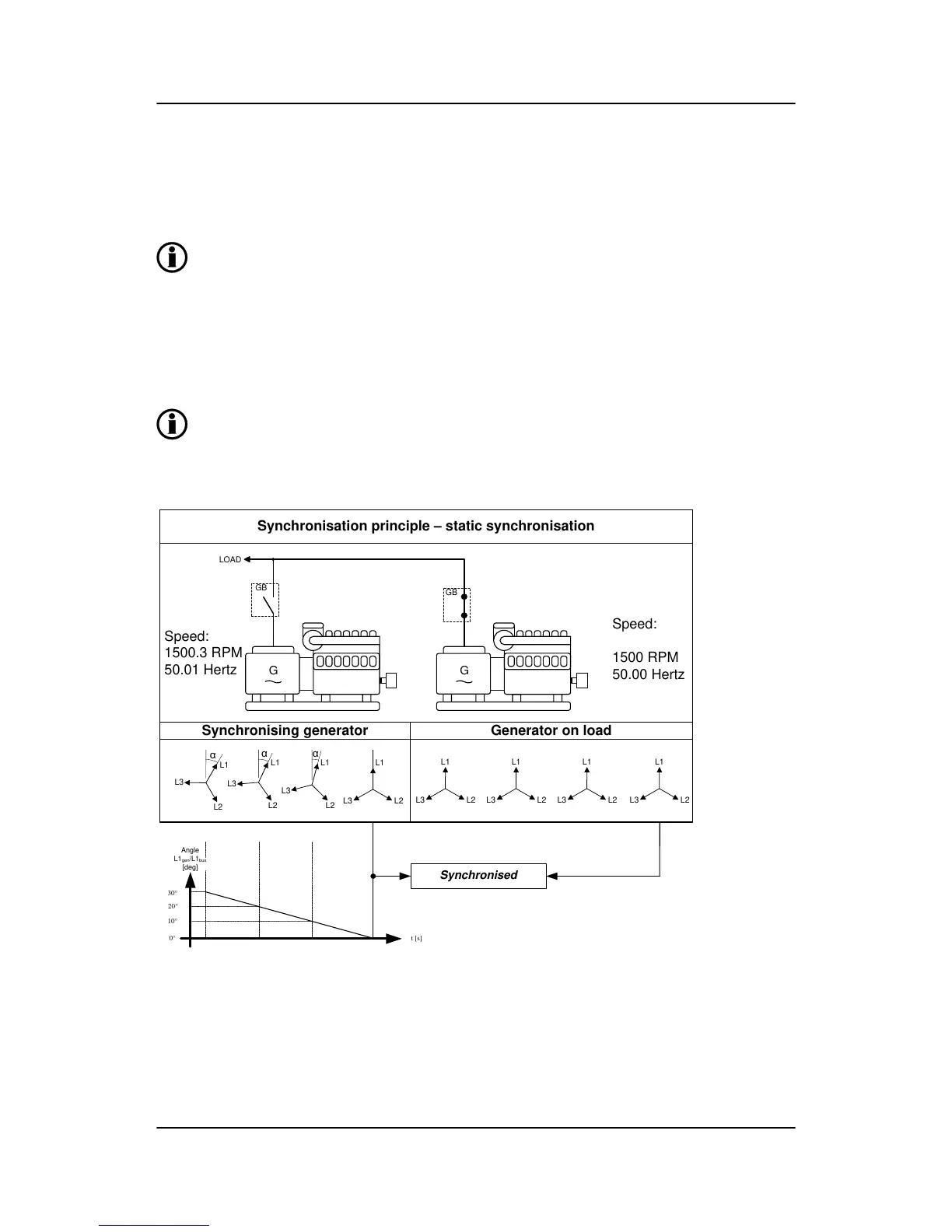It is obvious that this type of synchronisation is able to synchronise relatively fast because of the adjusted
minimum and maximum slip frequencies. This actually means that when the unit is aiming to control the fre-
quency towards its set point, synchronising can still occur as long as the frequency is within the limits of the
slip frequency adjustments.
Dynamic synchronisation is recommended where fast synchronisation is required, and where
the incoming gensets are able to take load just after the breaker has been closed.
7.3 Static synchronisation
In static synchronisation, the synchronising genset is running very close to the same speed as the generator
on the busbar. The aim is to let them run at exactly the same speed and with the phase angles between the
three-phase system of the generator and the three-phase system of the busbar matching exactly.
It is not recommended to use the static synchronisation principle when relay regulation out-
puts are used. This is due to the slower nature of the regulation with relay outputs.
The static principle is illustrated below.

